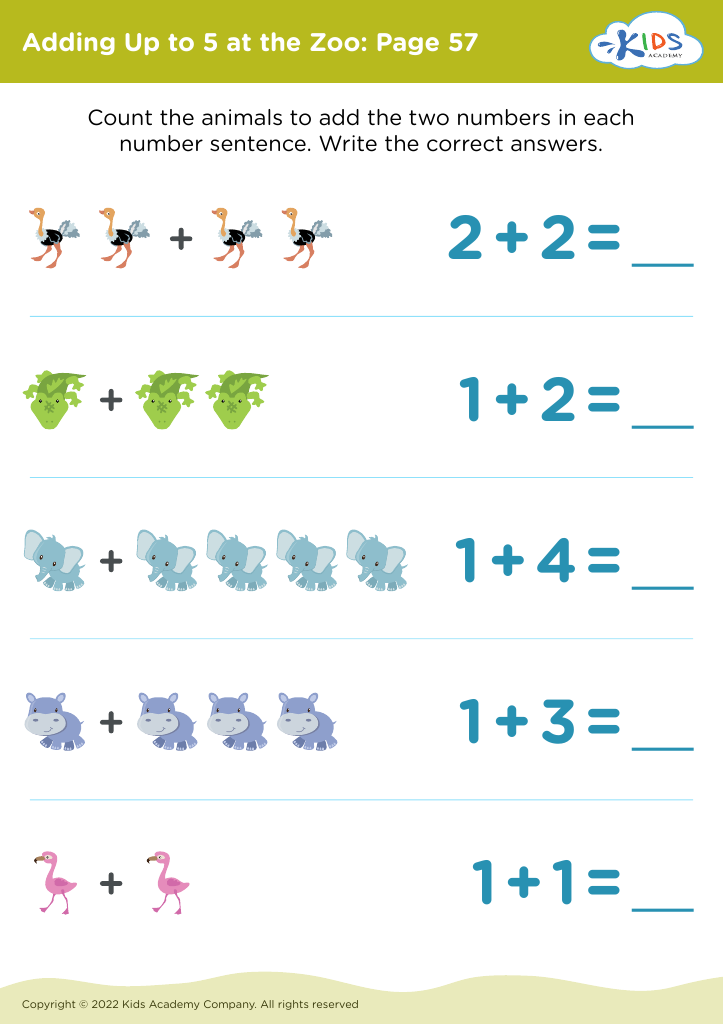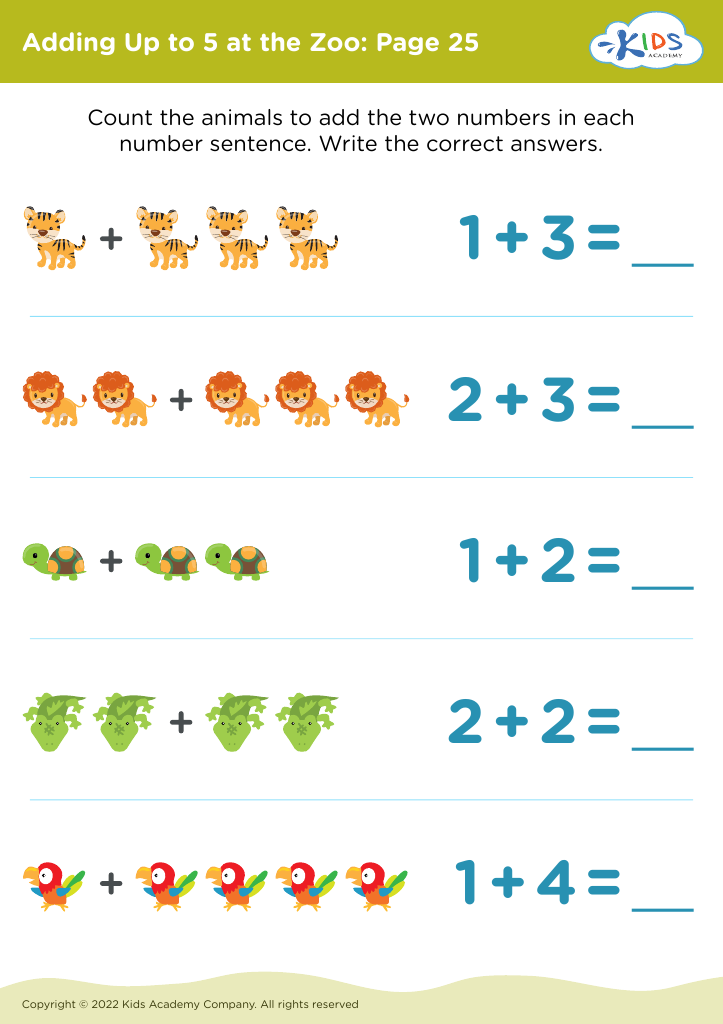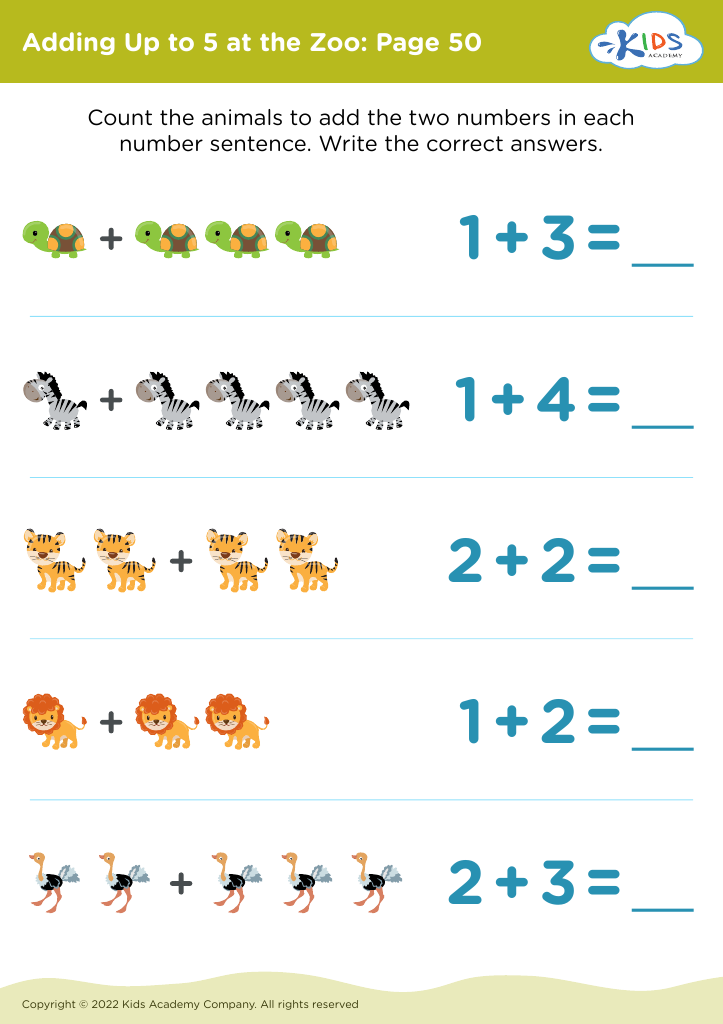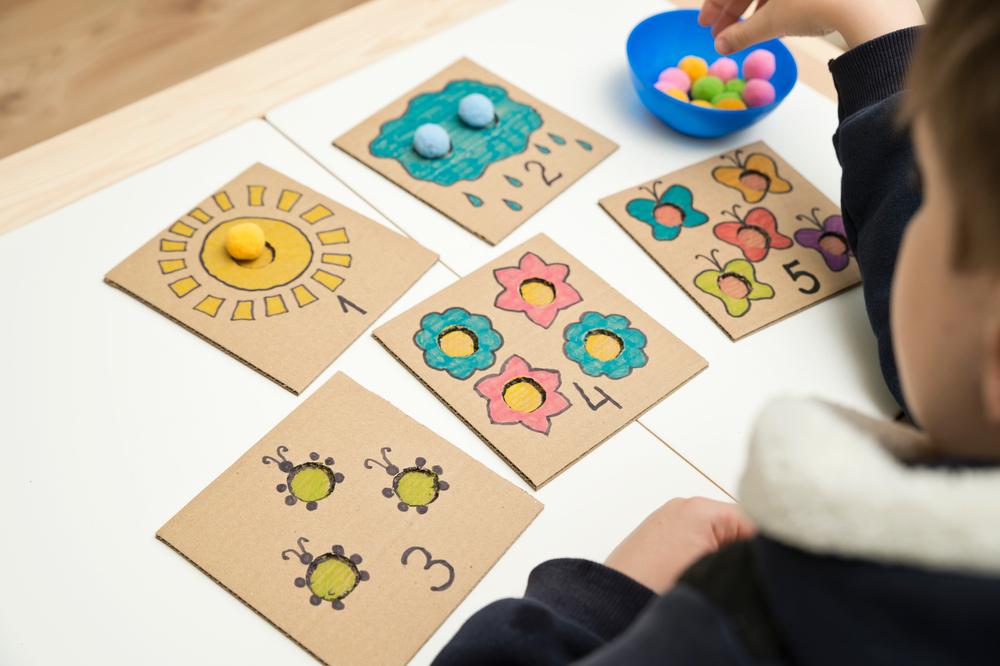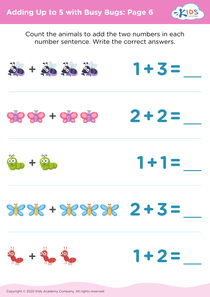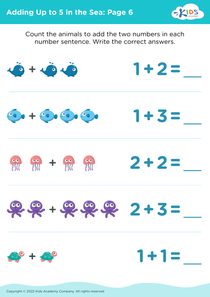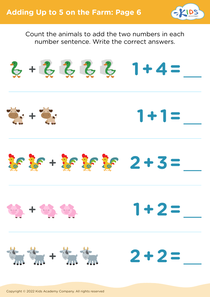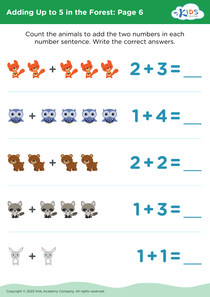Hand-eye Coordination Adding at the Zoo Worksheets for Ages 4-8
3 filtered results
-
From - To
Enhance your child's hand-eye coordination with our engaging "Adding at the Zoo" worksheets, designed for ages 4-8. These interactive printables combine the excitement of a zoo adventure with essential math skills, allowing young learners to practice addition while honing their coordination. Each worksheet features adorable zoo animals, captivating illustrations, and fun activities that encourage counting and problem-solving. By balancing playful math concepts with hands-on practice, children will develop their motor skills and confidence. Ideal for at-home or classroom use, these worksheets make learning math enjoyable and effective. Download now to help your child take a big leap in both math and coordination!
Hand-eye coordination is a critical skill for young children, particularly in the ages of 4-8, when they are developing essential motor skills and cognitive abilities. Activities like “Hand-eye Coordination Adding at the Zoo” engage children in a fun and interactive way, merging physical activity with learning.
This type of activity encourages children to coordinate their hand movements with their visual perception while they engage in counting and addition, essential math skills. By incorporating a zoo theme, children tap into their curiosity and creativity, making the learning experience more enjoyable and relatable.
Moreover, strengthening hand-eye coordination helps improve other physical skills such as writing, drawing, and sports. It cultivated confidence as they experience mastery in these activities. Additionally, these exercises promote social skills when done in group settings, encouraging teamwork and communication.
Teachers and parents should prioritize such activities as they foster holistic development—cognitive, physical, and social—all key components for a child’s growth. Ultimately, nurturing these foundational skills equips children with the necessary tools for future learning and daily life tasks, setting them up for success both in and out of the classroom.
